Selecting the “Right” Chainmail
There are many types of Chainmail and the terminology used to describe the steel type, construction, ring arrangement and more can be overwhelming.
The chainmail category contains words like dome riveted, high tensile wire, alternating, flat ring and more. The words come in multiple iterations and combinations – all to describe one category.
Recommendation: Begin your search by considering use.
Are you participating in sport combat? Are you focused on not just the look, but also the historical accuracy of what you don? Are you concerned about the heat and weight of what you wear at a Renaissance Fair?
If you are deadset on historical accuracy, then the path is clear. Start with mild steel, match riveting to historical era (see below), and move on to select pieces. If you are willing to compromise in order to purchase a set that is easier to care for, or perhaps lighter and potentially more affordable, then your selection options multiple.
Chainmail (often just called mail) is an armor made of interlocking metal rings that was designed to protect the wearer from a variety of weapons, including swords, arrows, and blunt force trauma.
It was also relatively lightweight and flexible, which allowed for greater mobility on the battlefield. Importantly, chainmail was relatively easy to produce, which made it a popular choice for armies that needed to outfit large numbers of soldiers.
Its origins can be traced back to the ancient Celts, who used small iron rings to make decorative pieces of jewelry. Adopted and evolved by the Greeks and Romans, the technique was refined and developed into a form of armor that was widely adopted during the Middle Ages throughout Europe.
Kult of Athena offers a wide range of types of chainmail that can be distinguished by construction method, chain arrangement, ring type, and the type of material used.
There are many options to consider. We suggest starting by considering what is most important to you: should the mail be historically accurate? Will it be used as a layer in sport combat? Are you concerned about care or comfort? For the most part, that will be driven by steel type.
Considerations for Selecting Steel Type
| Historically Accurate | Mild Steel |
| Adapted for Care | Stainless Steel or Zinc Coated |
| Adapted for Weight | Aluminum |
| Adapted for Sport Combat | Titanium |
| Most Affordable | High Tensile Wire |
Materials Used in Chainmail:
Mild Steel
The most historically accurate ring material type available. The rings are made from untempered plain steel.
Butted High Tensile Wire
These are rings of mild steel made from thick wire that is designed to resist breakage from bending or twisting.
Stainless Steel
These rings are made from steel with additional chromium and other added elements to give the steel resistance to tarnish and rust.
Zinc Plated
These rings are made from steel with a coating of zinc to make them highly resistant to rust or tarnish.
Aluminum
These rings are made from lightweight aluminum. Mail that is made from aluminum weighs significantly less and is ideal for costume, Faire and other uses where appearance matters over durability.
Titanium
Both lightweight and strong, titanium is ideal for sport combat.
Chainmail Construction Methods:
Once you have chosen the material for the types of chainmail you would like, you can consider the types of riveting used. All historical chainmail would have been riveted. The construction method for riveting the rings was different by era. Prior to wedge-riveted construction emerging in the 14th century, mail was dome riveted.
Construction Method:
A method of riveting an open mail ring that uses a steel pin or thick wire which is then pressed and riveted to “mushroom” into a dome shape that holds the ring in place. This style of mail is common from Classical Antiquity until the later years of the High Medieval Period (Approx: 3rd Cent BC to 1300 AD).
A method of riveting an open mail ring that uses a triangular wedge of metal which is then pressed to flatten and peen itself over the ring to hold the ring closed. Wedge-riveted mail has the advantage of the rivets having a flatter profile which is less likely to entangle and catch on other rings and is less abrasive to any clothing or accessories are worn over the mail. This style of mail becomes dominant in the later part of the High Middle Ages and the Late Medieval Period ( Approx. 1300 to 1550 AD).
Butted Rings are Round or Flat rings which are not riveted closed, but instead have the open ends butted up and pressed against one another to close the ring. These are not historically accurate but are generally a more affordable option for recreation.
Chainmail Construction Arrangement:
The arrangement of the ring is another consideration, with the prevalent choices being either “alternating” or “fully riveted.”
- Alternating: The chainmail is arranged in a pattern where each riveted ring is paired with a solid ring. This historical method reduces by 1/2 the amount of rings that need to be riveted to create an armored piece, thus reducing labor and cost.
- Full Riveted: If an article of chainmail does not mention “alternating” in its title or description, then it means that this chainmail is fully riveted by default whereby each ring is riveted closed during construction. Like alternating mail, this is also a historical construction type.
Selecting the Right Type of Chainmail:
That is just a brief introduction to the types of chainmail Kult of Athena offers. There is a lot of detail. Stay focused by knowing where you want to end-up. Lost your way and overwhelmed?
Check out our video series on mail in order to get more details:
Reach out to our customer service team for assistance.



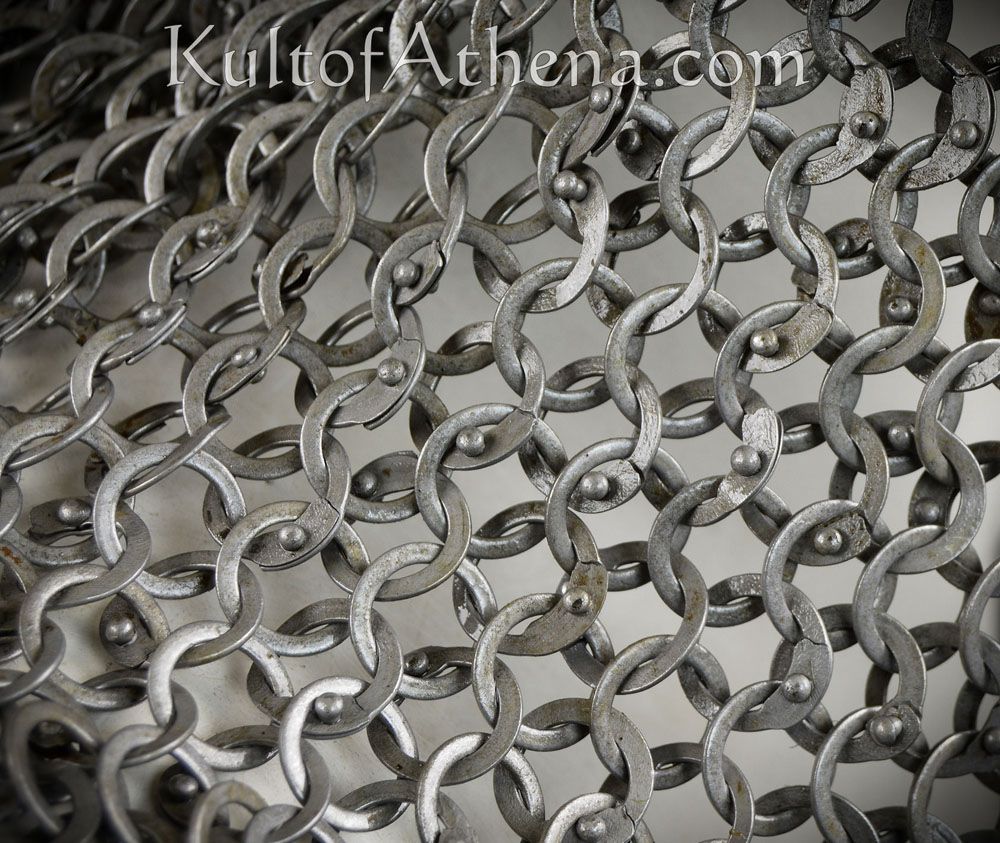


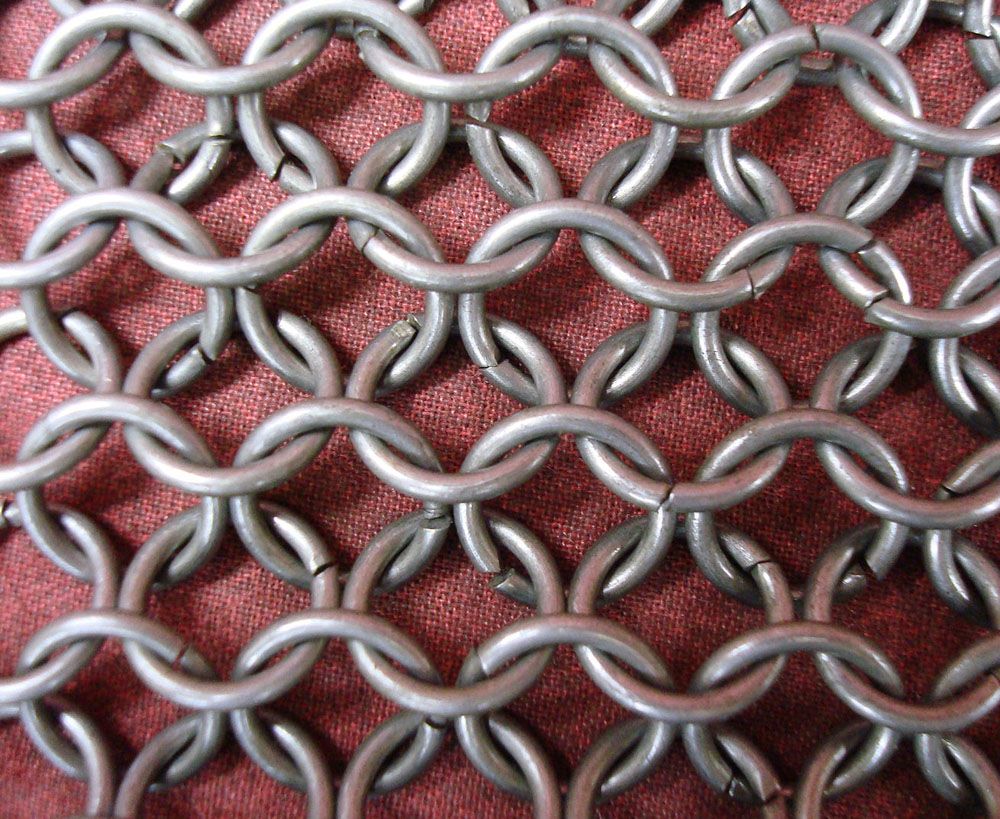

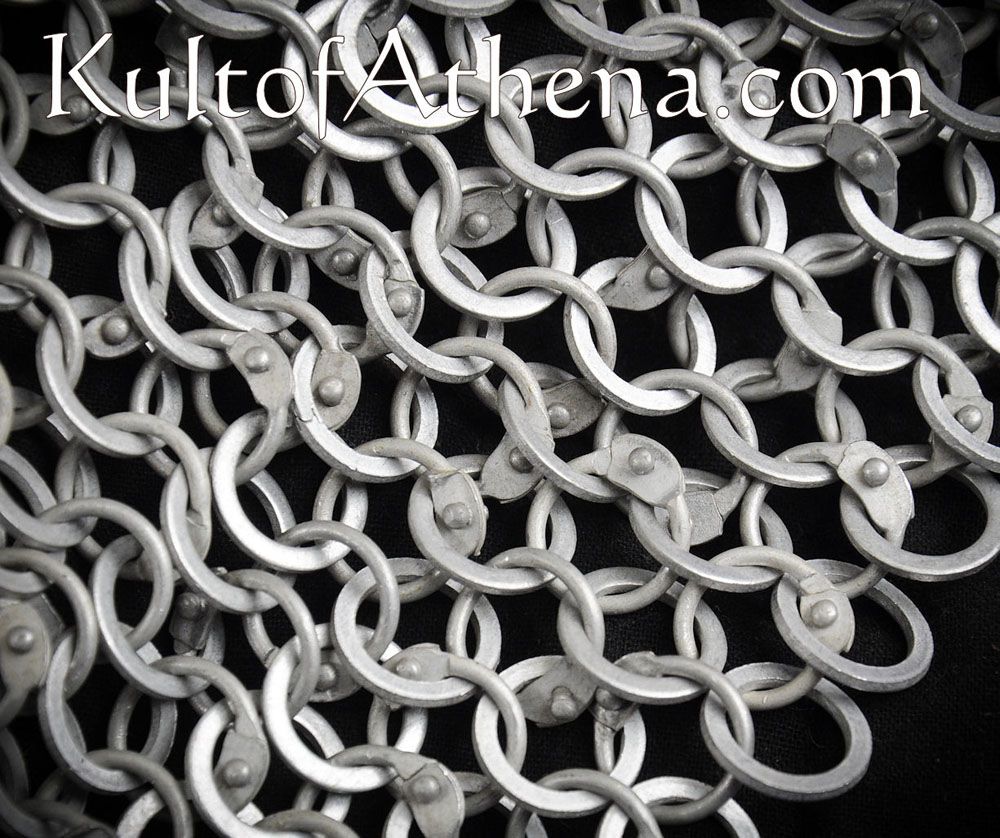
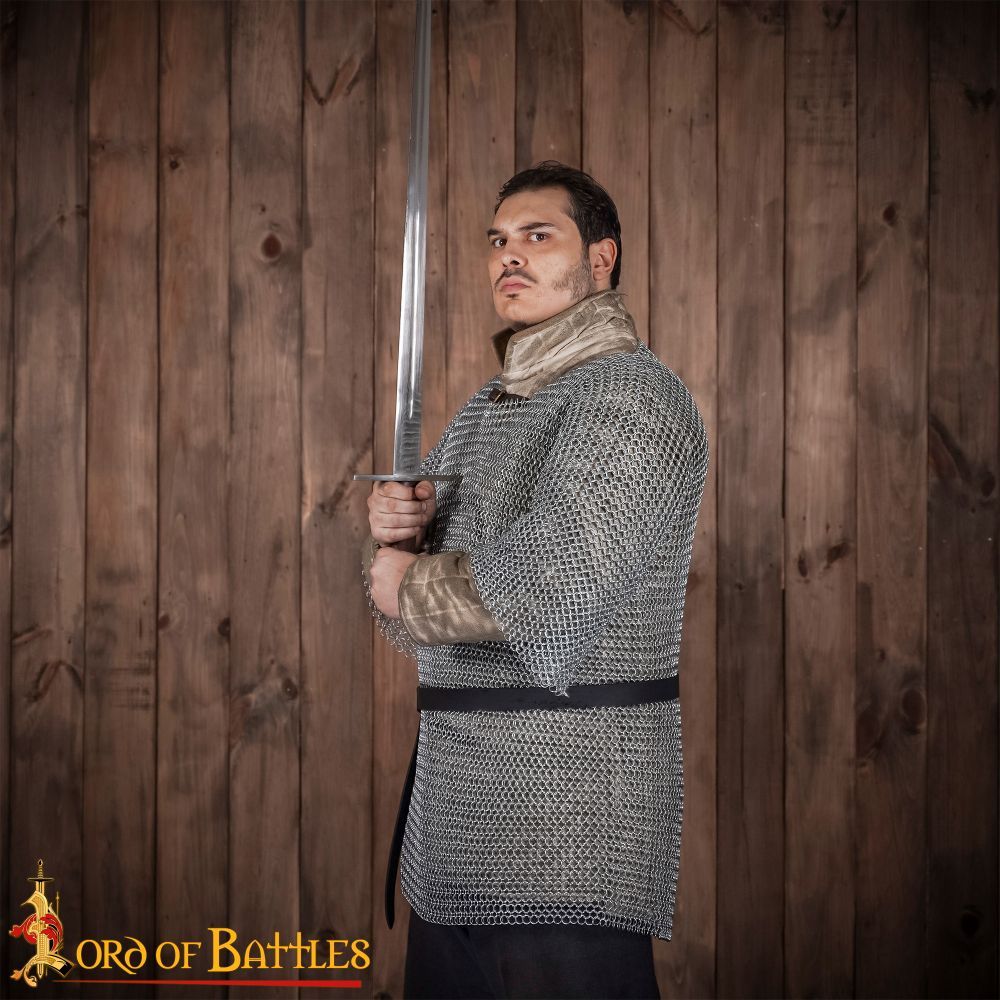
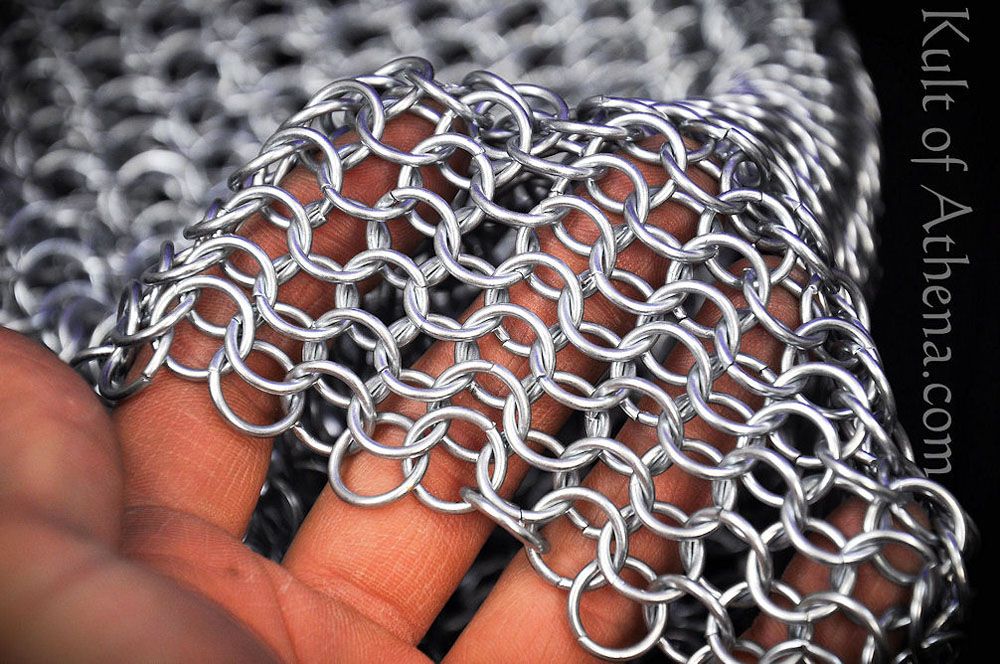

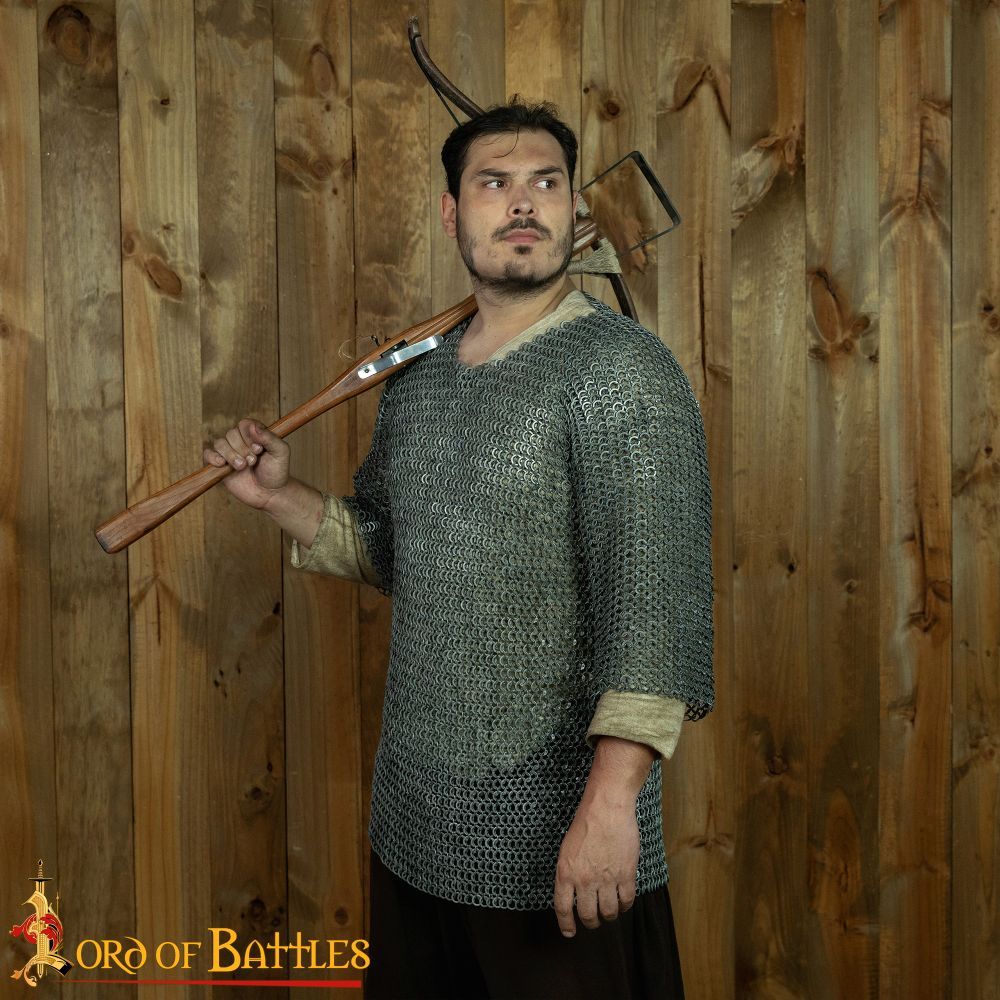
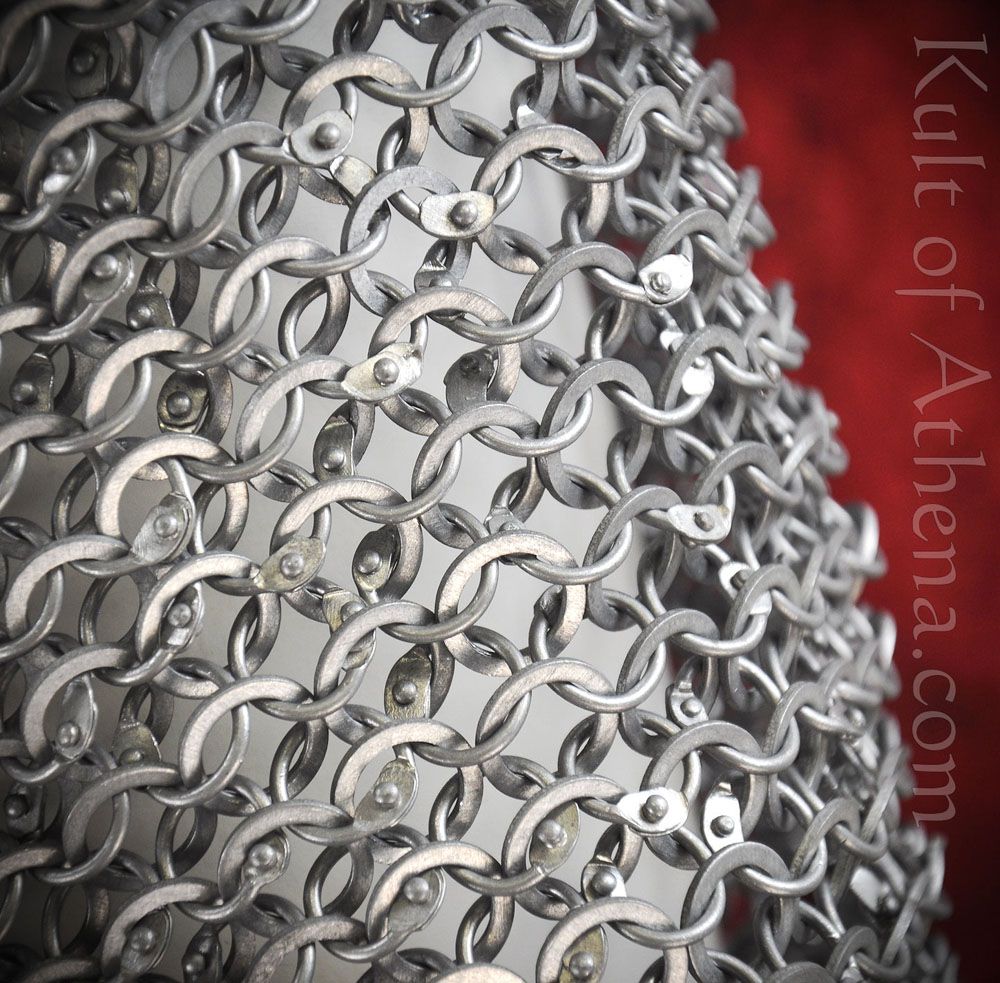

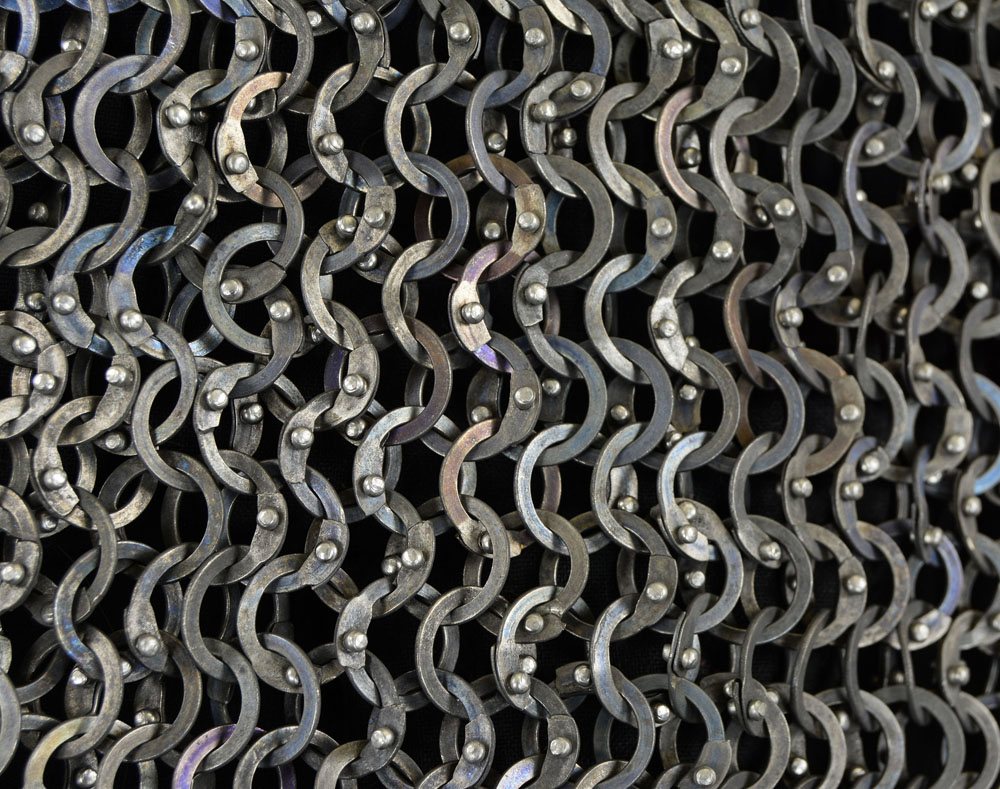
Leave a Reply